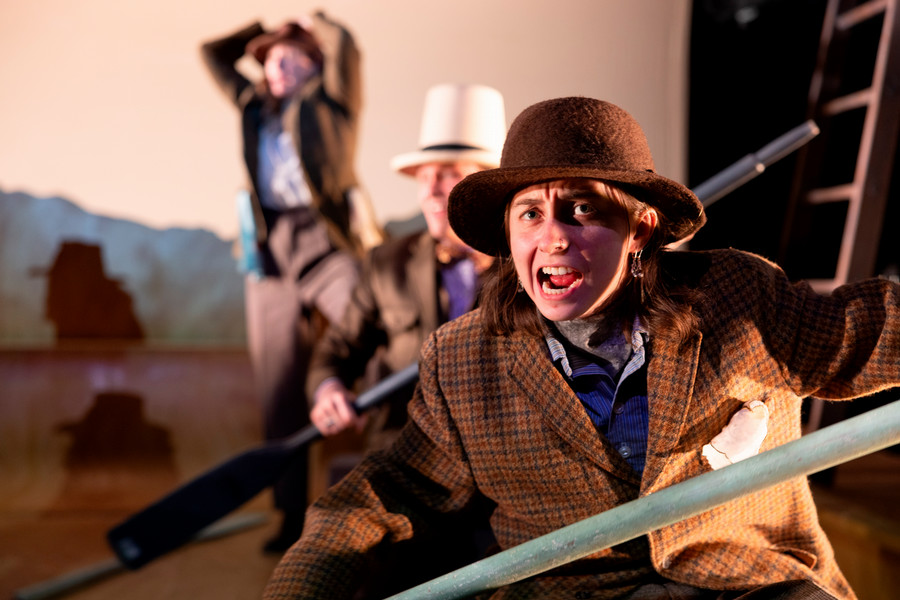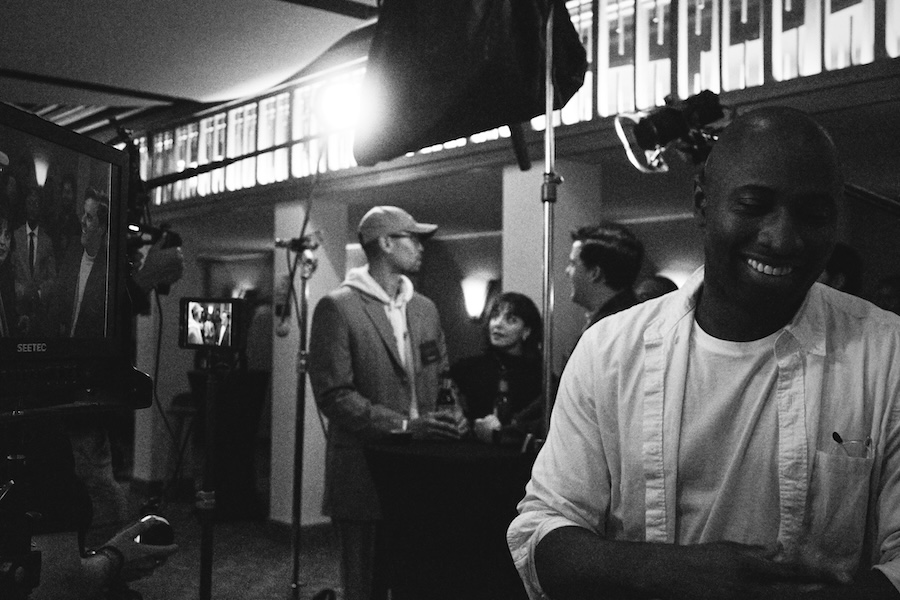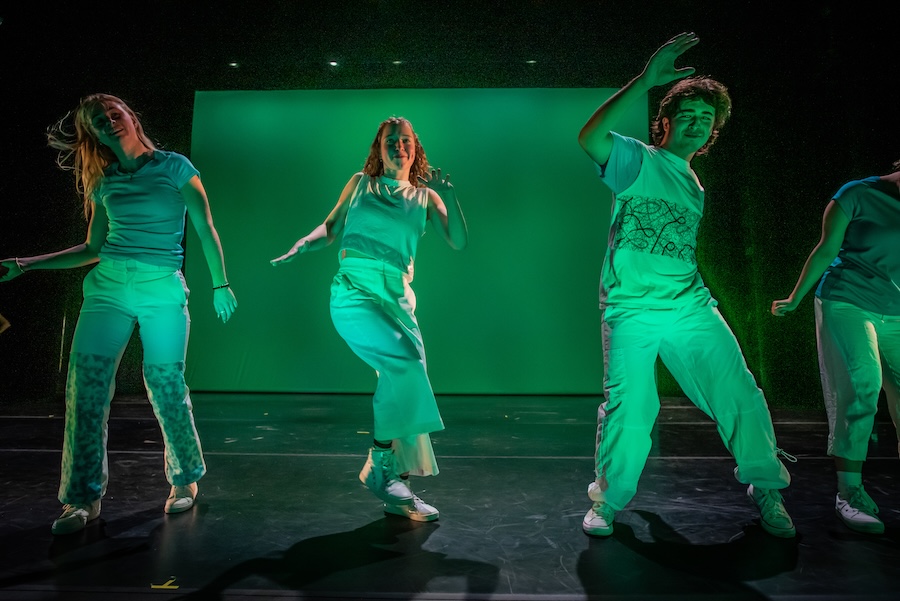Cue Lights! New LED Lamps Enhance Bowdoin's Theatrical Offerings, And Save Money
By Tom PorterAsk most people what they remember about an enjoyable trip to the theater, and they will probably say “the performance,” “the music,” “the costumes” or maybe “the set design.” But they’re unlikely to comment on the stage lighting, even though it’s a crucial part of any theatrical production: and that is as it should be, says Michael Schiff-Vere, Bowdoin’s director of theater operations. “If we do our job correctly, the audience shouldn’t be aware of the lighting.”
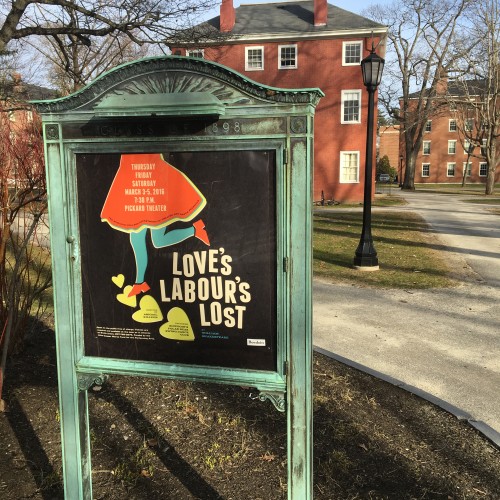
Schiff-Vere is backstage at Pickard Theater, where rehearsals are underway for the Shakespearean comedy “Love’s Labour’s Lost,” which runs March 3-5.
The production is an unusual one — set in the early 1960s — and cast members are dancing to an old rock and roll song on a stage bathed in multi-colored circles of light. This show is the first to use new LED lights bought by the college recently for about $90,000.
That may sound like a hefty sum, but it’s a great investment, says Schiff-Vere, and a money-saver in the long run, using up to 90 percent less power than conventional lights.
More than 80 new lights were bought, he explains, and they’re split between Pickard and the neighboring Wish Theater, which are both housed in Memorial Hall. About a quarter of the old lights, which are between 25 and 40 years old, were replaced with the LED ones, which each use only 187 watts.
“That’s a great move,” says Schiff-Vere. “With a conventional light, to have it on full you’re anywhere between 500 and 2,000 watts, and that’s a lot of power.”
Schiff-Vere says Bowdoin also saves on air-conditioning costs because these new lights get nowhere near as hot as the old ones.
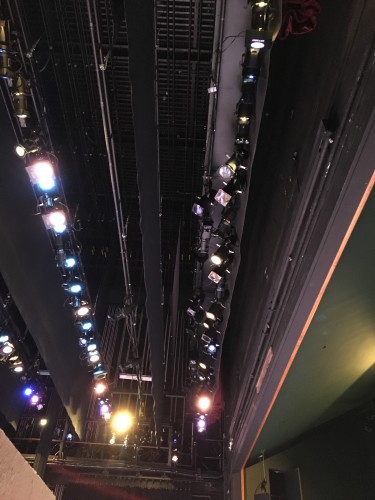
As well as being energy efficient the new lights offer more flexibility, says JP Gagnon, a Portland-based lighting contractor and LED authority who was hired to oversee the installation and deployment of the new lights at the theater.
“Typically, you would need more than one light to create different colors, plus lighting gels,” he says, referring to the transparent sheets of colored material that are placed in front of the lighting fixture.
“With LED, one light can be any color you want,” he enthuses: “it’s almost unlimited, we have 16 million colors we could make.”
He admits there is a lot more setup involved with LED lights, with each fitting having to be programmed, “but on the plus side, you’re only likely to have to do it once: the life of one of these lights is 50,000 hours.”
Gagnon says the technology has been around for about 10 years, but only started to gain traction in the last couple of years.
“That’s partly due to the expense issue,” he says, with the cost of a single light now around $1,000, which is half of what is was three years ago. And then there was the ‘dimabiity’ issue: the big challenge initially, says Gagnon, was that LED lights could not achieve an even fade.
“LED fades were too jumpy, you couldn’t get the same control you got with conventional lights,” which of course was a problem for theatrical lighting, although this problem has now been fixed.”
For Schiff-Vere the last few weeks have been a steep but valuable learning curve. And the same is true, he says, for the student technicians working under him.
“The experience has enabled the department to stay current with technology, so if any of these students enter the professional world of theater, they’ll have a background in cutting edge technology.”
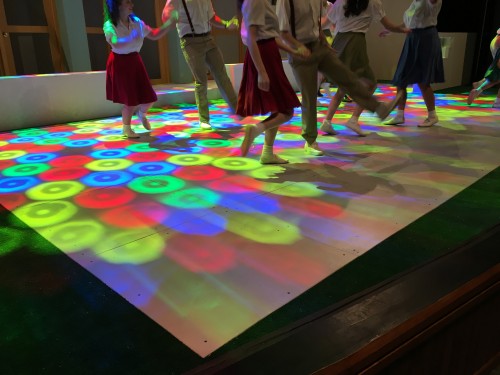
The arrival of LED lights on Bowdoin’s theatrical stages is the culmination of several years work, says Keisha Payson. She’s the sustainability co-ordinator at Bowdoin’s Office of Facilities Management.
“LED technology is still relatively new, and theater lighting is so specialized, that considerable analysis had to be put into the selection process,” she says, pointing out that a variety of fixtures from various vendors were assessed to determine the best fit.
Says Payson: “We are all excited about the level of performance and energy efficiency we will experience with these new lights.”
It is perhaps ironic however that as the curtain goes up at Pickard Theater, the audience will probably be unaware that the 400-year old play they’re enjoying is being enhanced by the most up-to-date of lighting technologies.
